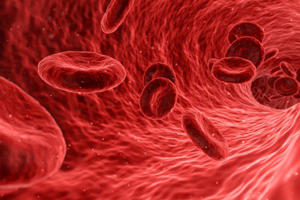News
Aby Joseph presents to the NakedScientist podcast on his recent work in elife
Wednesday, July 17, 2019

Article can be read here: https://elifesciences.org/articles/45077.
Podcast link here: https://www.thenakedscientists.com/articles/interviews/seeing-blood-vessels-eye
Imaging That Twinkle in Your Eye: Assessing Vascular Health by Imaging Blood Cells in the Retina
Tuesday, May 14, 2019
.jpg)
Jesse B. Schallek, Ph.D., assistant professor in the Department of Ophthalmology, describes a new, noninvasive approach to assess vascular health in the journal eLife. Schallek's lab, part of the Flaum Eye Institute, developed a method to visualize how single blood cells flow through vessels of the eye using adaptive optics imaging.
The transparency of the eye provides a natural window to the retina, an extension of the brain. Vascular physiology is best studied noninvasively inside the living body, but seeing the details of how microscopic blood cells interact within the vasculature has not been possible with current tools such as fMRI. Schallek's team developed high-resolution adaptive optics combined with fast camera capture to visualize single-cell blood flow dynamics in the living mouse eye.
"We're able to image single blood cells and measure their speed. Remarkably, this can be achieved in vessels of all sizes, from the smallest capillaries to the largest retinal vessels," said Schallek. "This approach may eventually provide a view of patient vascular health without the need for blood draws or dyes.
Krystel Huxlin, Ph.D., Associate Chair for research in the Department of Ophthalmology adds, "This method has the potential to enable early diagnosis of cardiovascular disease and diabetic neuropathy, and will also be of interest to investigators studying blood flow in the context of stroke and neurodegenerative diseases like Alzheimer's.
The study was conducted in large part by Optics graduate students Aby Joseph and Andres Guevara-Torres. "My research interest involves using my physics/optics background to provide insights into biological questions," said lead-author Joseph. "This paper, at the intersection of physical sciences and neuroscience, provides a novel and noninvasive imaging approach that may advance our understanding of blood flow dynamics in brain and retinal vessels smaller than the width of a human hair.
Schallek's team, part of the Advanced Retinal Imaging Alliance (ARIA), is now deploying the method in healthy human eyes to establish metrics that will enable researchers to better elucidate the events that initiate and propagate disease. A pre-clinical investigation, funded by the Dana Foundation, is beginning to use this powerful approach to compare what happens in normal and diabetic retinas of human subjects. Schallek holds secondary appointments in the Department of Neuroscience and the Center for Visual Science. The research was funded by the National Eye Institute at the National Institutes of Health and by a Career Development Award from Research to Prevent Blindness.
